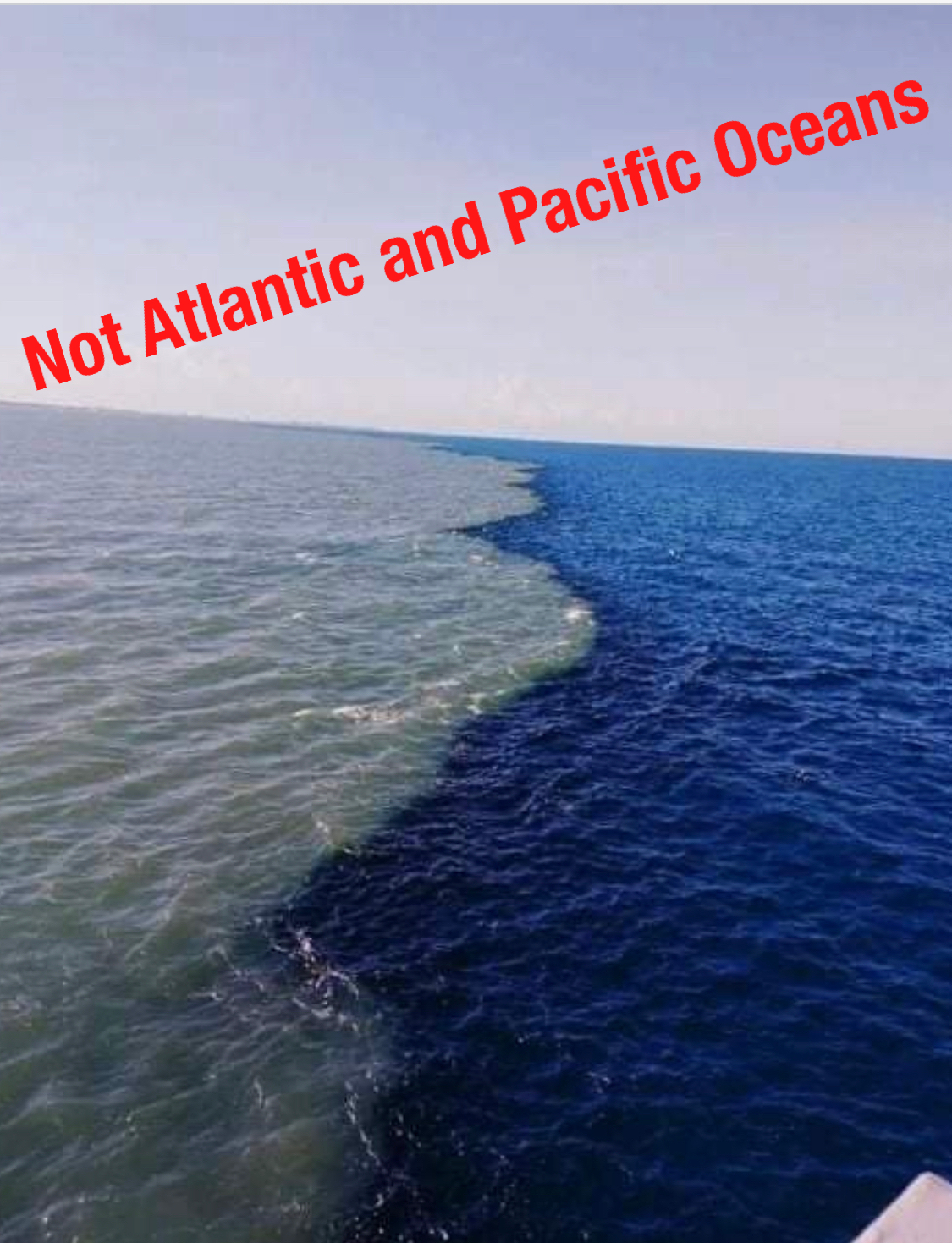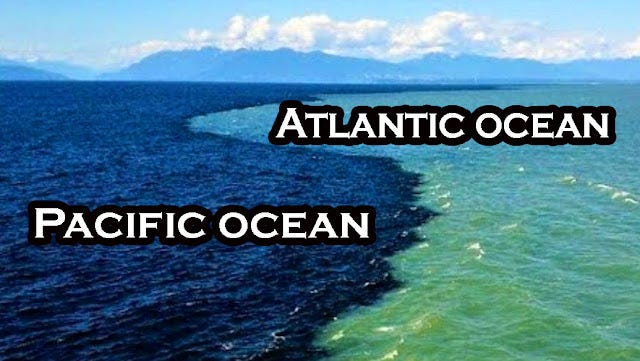Why Do The Pacific Ocean And Atlantic Ocean Not Mix

Ever stood at the beach, watching the waves crash, and wondered if all the water in the world just… mixes? Seems logical, right? Especially when you picture the vast, connected oceans. But here’s a mind-blower: the Atlantic and Pacific Oceans, despite bumping right into each other, don't exactly blend like a smoothie.
The Great Ocean Impasse: A Clash of Titans!
Imagine two heavyweight boxers, the Atlantic and the Pacific, meeting in the ring. They touch gloves, acknowledge each other’s presence, but then mostly just…circle around. They're not throwing punches of perfect mixture. Why this oceanic standoff?
One of the biggest reasons is density. Think of it like this: you've got a glass of water and you try to pour oil on top. Does it mix? Nope! The oil, being less dense, just sits on top, creating a clear line. The Atlantic and Pacific, while both water, have slightly different densities.
The Atlantic tends to be saltier than the Pacific. More salt means more density! And that extra density makes it harder for the waters to just happily mingle.
Temperature Tango: A Chilling Revelation
Temperature also plays a huge role! Picture a warm bath. Now dump in a bucket of ice water. Does it instantly become perfectly lukewarm? Nope! You get pockets of cold and warmth until it gradually balances out.
The Atlantic and Pacific have significant temperature differences, especially in certain regions. Cold water is denser than warm water, further contributing to the separation.
Salinity Shenanigans: A Grainy Affair
Think about adding sugar to your tea. Stir it enough, and it dissolves completely, right? But what if you keep adding sugar and adding sugar? Eventually, it won't dissolve anymore. The water becomes saturated.
Ocean water, like tea, has a limit to how much salt it can dissolve. The Atlantic's higher salinity creates a barrier, resisting the Pacific's advances of freshwater infusion.
Visual Proof: Seeing is Believing (Sometimes)!
You might have seen photos or videos online claiming to show a clear line between the Atlantic and Pacific. Sometimes, these are a bit… exaggerated. It's not always a stark, "BAM! Ocean A on this side, Ocean B on that side!" type of boundary. It is more subtle!
What you’re often seeing are differences in color and sediment concentration. These can create a visual effect that looks like a distinct line, but it's more of a zone of transition. It's like looking at the edge of a forest - it's not a perfectly straight line, but you can tell where the forest ends and the field begins.
Essentially, the oceans *do* mix, but it's a gradual process, not an instant blend. The different densities, temperatures, and salinities create barriers that slow down the mixing process.
Oceanic Etiquette: A Respectful Distance
So, the next time you're near an ocean, remember that it's not just one big, homogenous soup. Different bodies of water have their own unique personalities, and they maintain a certain level of independence. They're like polite neighbors, acknowledging each other but keeping a respectful distance.
And hey, isn't it cool that even something as vast and seemingly uniform as the ocean can have these fascinating differences? It just goes to show, there's always more to discover, even in the most familiar places. And that’s something worth celebrating!


















